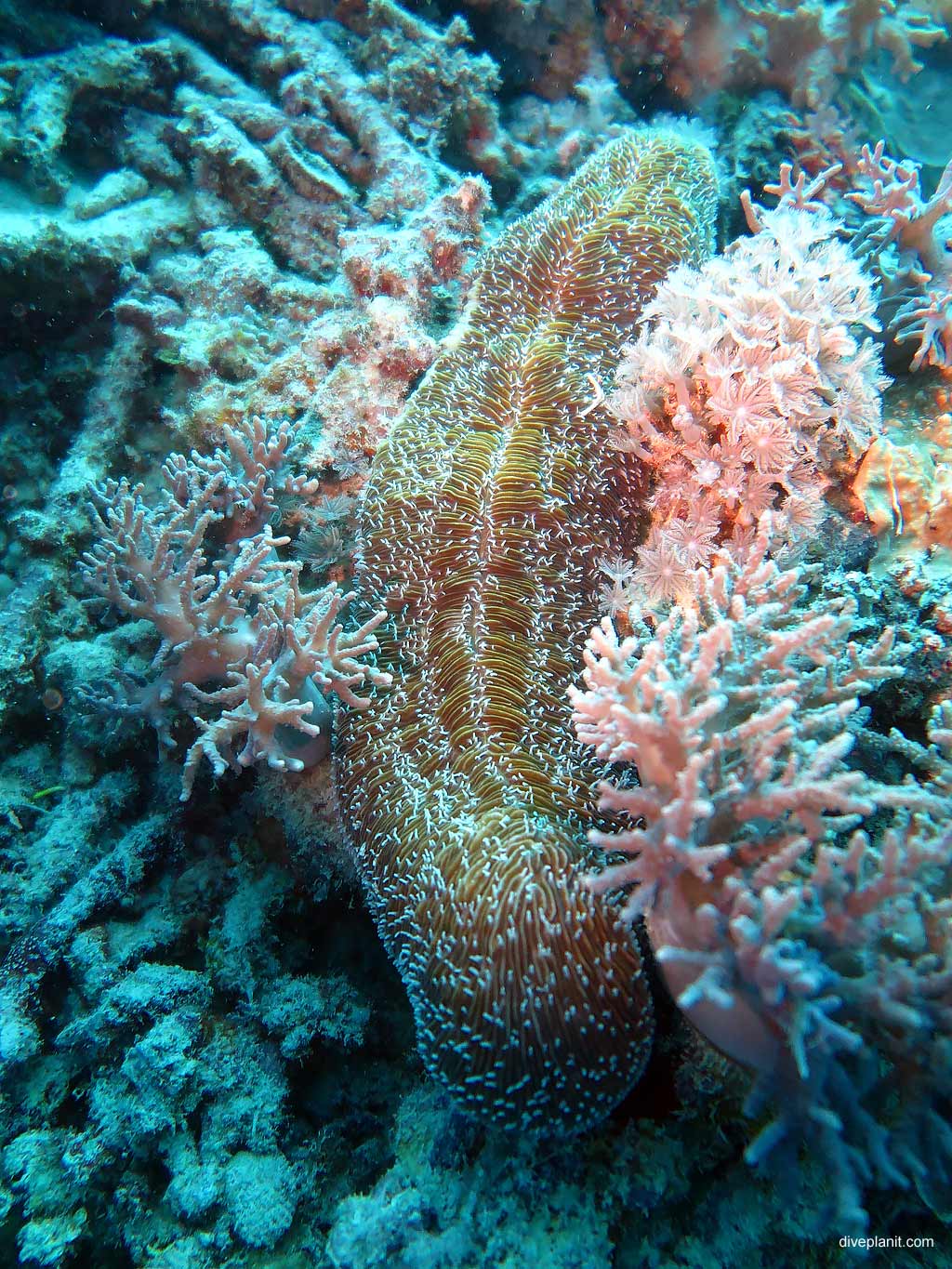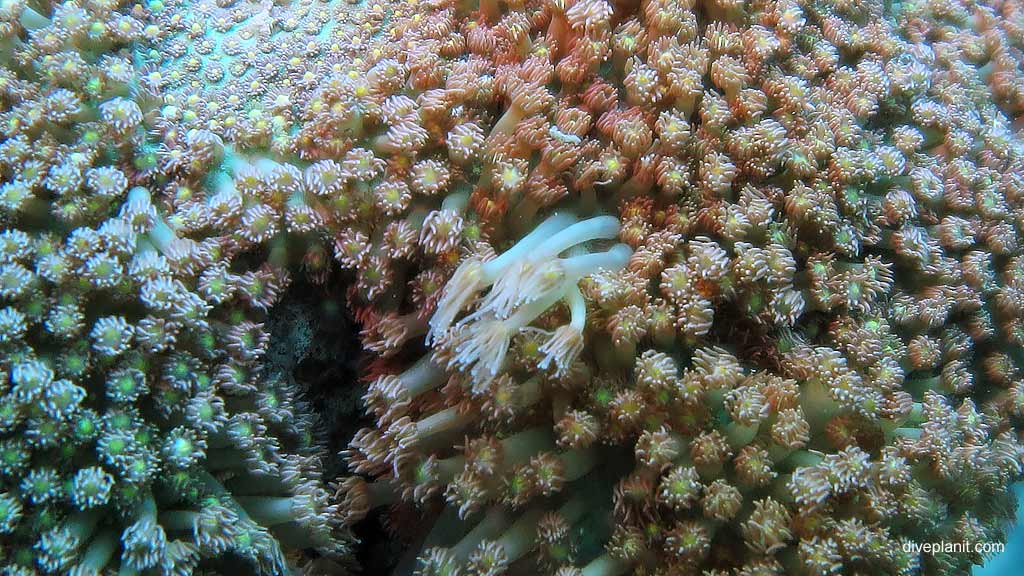Biodiversity #7 – Coral. Very simply: little polyps 1-3mm across (bit like jelly fish without tentacles), convert sunlight into energy and excrete some calcium carbonate – which is what builds the reef that they live in. Coral often looks ‘dead’ – but once the polyps are feeding, you realise that even those disk corals that look like upside down mushrooms, are actually alive.
Here’s another one of of brain coral. A really good reason not to pick stuff up, or drag your contents gauge or fins over what looks like rock – because if it’s coral it is very much alive.
Major threats include sea temperature rises, causing bleaching effects where the polyps leave their limestone homes; and ocean acidification (acid dissolves limestone) caused by the oceans absorbing more carbon from the atmosphere. There is some more lovely coral pix from Hardy Reef in the Whitsundays here.
<= Previous Biodiversity #6 Whale Biodiversity #8 Sea Cucumber Next =>





